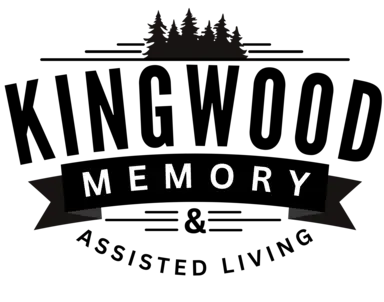Harnessing Electrical Stimulation as Therapy Post-Traumatic Brain Injury (TBI)
Traumatic brain injury (TBI) poses significant challenges to patients’ cognitive and motor function, often leading to long-term disabilities. In recent years, electrical stimulation has emerged as a promising therapeutic approach for enhancing neuroplasticity, promoting recovery, and improving functional outcomes following TBI. This analysis explores the mechanisms of electrical stimulation, its applications in TBI rehabilitation, and the evidence supporting its efficacy as a neurorehabilitation intervention.
Mechanisms of Electrical Stimulation
Neuromodulation:
Electrical stimulation techniques such as transcranial direct current stimulation (tDCS), transcranial magnetic stimulation (TMS), and deep brain stimulation (DBS) modulate neuronal excitability and synaptic activity in targeted brain regions. By delivering controlled electrical currents to the brain, these techniques can enhance or suppress neural firing patterns, thereby influencing cognitive, sensory, and motor functions.
Neuroplasticity:
Electrical stimulation promotes neuroplasticity, the brain’s ability to reorganize its structure and function in response to experience and injury. By modulating synaptic plasticity mechanisms such as long-term potentiation (LTP) and long-term depression (LTD), electrical stimulation facilitates the formation of new neural connections, strengthens existing circuits, and promotes adaptive reorganization of damaged brain networks.
Neurotrophic Factors:
Electrical stimulation increases the expression of neurotrophic factors such as brain-derived neurotrophic factor (BDNF) and nerve growth factor (NGF), which play crucial roles in neuronal survival, growth, and synaptic plasticity. These neurotrophic factors promote the growth of axons, dendrites, and synapses, support neuronal survival and resilience, and enhance the efficacy of synaptic transmission, contributing to functional recovery and rehabilitation following TBI.
Applications in TBI Rehabilitation
Motor Rehabilitation:
Electrical stimulation techniques such as functional electrical stimulation (FES) and neuromuscular electrical stimulation (NMES) are commonly used to facilitate motor recovery and rehabilitation in patients with TBI. FES delivers electrical currents to peripheral muscles to induce muscle contractions and restore motor function in individuals with paralysis or weakness, while NMES targets specific muscle groups to improve strength, coordination, and gait patterns.
Cognitive Rehabilitation:
Electrical stimulation techniques such as tDCS and TMS have shown promise in enhancing cognitive function and promoting cognitive rehabilitation following TBI. tDCS delivers low-intensity electrical currents to cortical regions implicated in cognitive processes such as attention, memory, and executive function, while TMS uses magnetic pulses to modulate cortical excitability and induce neuroplastic changes underlying cognitive performance.
Sensory Rehabilitation:
Electrical stimulation can also be used to restore sensory function and promote sensory integration in patients with TBI-related sensory deficits. Peripheral nerve stimulation (PNS) and cortical stimulation techniques target sensory pathways to enhance sensory perception, discrimination, and integration, facilitating recovery of sensory function and improving quality of life for individuals with TBI.
Evidence Supporting Efficacy
Motor Function:
Numerous studies have demonstrated the efficacy of electrical stimulation in improving motor function, muscle strength, and functional mobility in patients with TBI. FES and NMES interventions have been shown to increase muscle activation, enhance motor control, and improve gait parameters in individuals with TBI-related motor impairments.
Cognitive Function:
Research investigating the cognitive effects of electrical stimulation in TBI rehabilitation has yielded promising results. tDCS and TMS interventions have been associated with improvements in attention, working memory, and executive function in patients with TBI-related cognitive deficits, suggesting potential applications for cognitive rehabilitation and neuropsychological interventions.
Neuroplasticity and Recovery:
Neuroimaging studies have provided insights into the neurobiological mechanisms underlying the therapeutic effects of electrical stimulation in TBI rehabilitation. Functional MRI (fMRI) and electroencephalography (EEG) studies have demonstrated changes in brain connectivity, cortical excitability, and neural activation patterns following electrical stimulation, correlating with improvements in motor, cognitive, and sensory function.
Considerations and Future Directions
Individualized Treatment:
Tailoring electrical stimulation protocols to individual patient characteristics, including injury severity, functional impairments, and treatment goals, is essential for optimizing therapeutic outcomes and minimizing potential risks or adverse effects.
Long-Term Effects:
Longitudinal studies are needed to evaluate the long-term effects of electrical stimulation on functional recovery, quality of life, and neurocognitive outcomes in patients with TBI. Assessing durability, sustainability, and maintenance of treatment effects over time will inform the development of evidence-based rehabilitation protocols and guidelines.
Combination Therapies:
Combining electrical stimulation with other rehabilitation interventions, such as physical therapy, occupational therapy, and cognitive-behavioral therapy, may enhance synergistic effects and maximize functional outcomes in patients with TBI. Integrated, multidisciplinary approaches to TBI rehabilitation hold promise for addressing the complex and multifaceted nature of TBI-related impairments and disabilities.
Conclusion
Electrical stimulation represents a promising therapeutic approach for enhancing neuroplasticity, promoting recovery, and improving functional outcomes in patients with TBI. By modulating neuronal activity, promoting synaptic plasticity, and enhancing neurotrophic support, electrical stimulation techniques offer potential benefits for motor, cognitive, and sensory rehabilitation following TBI. Continued research efforts are needed to elucidate the mechanisms of action, optimize treatment protocols, and integrate electrical stimulation into comprehensive, patient-centered approaches to TBI rehabilitation.





